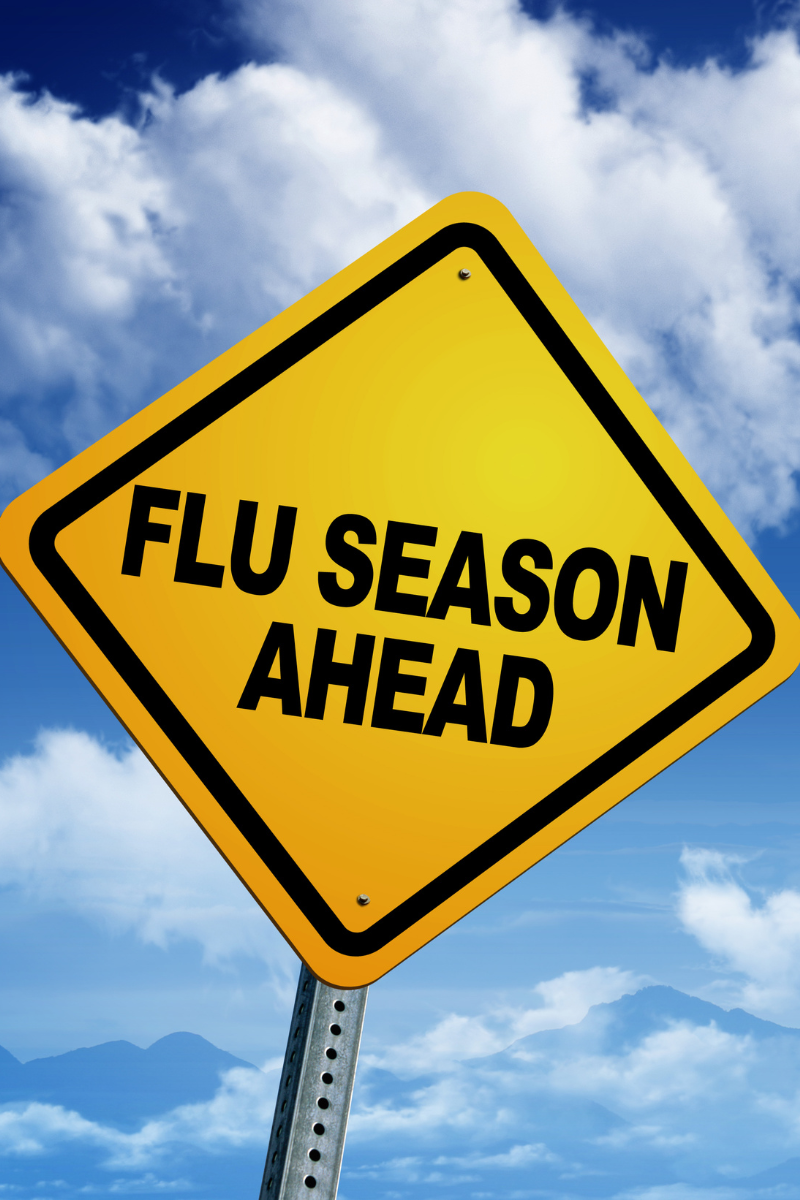From Prepared to Proactive: How Your Lab Can Lead This Respiratory Season
Respiratory Season 2025–2026: Lab Readiness That Works
Respiratory season is here, bringing COVID‑19, flu, and RSV surges. For clinical labs, success means more than stocked supplies. It’s about cross‑trained teams, streamlined workflows, and rapid, accurate results. Sparks & Sage’s 10‑point readiness checklist helps healthcare leaders move from reactive to resilient, protecting turnaround times and patient care.
The Calm Before the Surge
Every September, I can feel it coming. The mornings get cooler, the leaves start to turn, and in labs across the country, there’s a quiet hum of anticipation. For the public, fall means pumpkin spice and football season. For those of us in healthcare, it means respiratory season — and the stakes are high.
The 2025–2026 respiratory season is shaping up to be another complex one. The CDC’s latest Respiratory Disease Season Outlook projects a similar combined peak hospitalization rate for COVID‑19, influenza, and RSV compared to last year, but with the added challenge of multiple peaks and the possibility of a COVID‑19 variant with moderate immune‑escape properties.
If you’ve ever been in a lab during a surge, you know what that means: phones ringing off the hook, couriers rushing in with coolers, instruments running nonstop, and staff juggling priorities like air‑traffic controllers. The difference between chaos and controlled urgency? Readiness.
Why This Season Matters More Than Ever
Respiratory season isn’t just “flu season” anymore. It’s a multi‑pathogen, multi‑surge challenge that tests every part of your operation.
CDC Outlook: Expect similar overall hospitalization rates to last year, but with possible overlapping surges of COVID‑19, influenza, and RSV.²
Patient Flow Coordination: A 4‑hour delay in results can mean patients boarding in the ED, delayed admissions, and frustrated clinicians.
Policy Shifts: Vaccine recommendations, testing algorithms, and reporting requirements are evolving - and your protocols need to keep pace.³
The Four Pillars of Readiness
Before we get to the checklist, let’s frame the work around four key domains , each with real‑world examples from labs I’ve worked with:
Staffing & Surge Planning — People are your most valuable (and most limited) resource.
Supply Chain & POCT Lot Verification — No supplies, no testing.
Pre‑Analytic QA & Specimen Transport — Quality starts before the analyzer.
Result Turnaround, Reflex Logic & Escalation — Speed and accuracy only matter if results get to the right hands at the right time.
Pillar 1: Staffing & Surge Planning
In one rural hospital I worked with, the respiratory surge hit during a week when two senior techs were out sick. Because they had cross‑trained their phlebotomists on rapid flu and COVID‑19 testing, they kept turnaround times under 45 minutes, even with double the usual volume.
Key Actions:
Finalize on‑call rotations before October 1.
Cross‑train staff on multiple platforms (molecular, antigen, rapid) to avoid single‑point failures.
Identify backup personnel for critical roles — and make sure they’re actually trained, not just “on paper” coverage.
Consider staggered shifts to extend coverage without burning out your core team.
Pillar 2: Supply Chain & POCT Lot Verification
During the 2022–2023 season, one multi‑site system I consulted with avoided a major testing halt because they had verified and stocked extra POCT lots in advance. When a manufacturer recall hit mid‑season, they simply switched to their validated backup lots, no downtime, no panic.
Key Actions:
Conduct a full inventory audit of swabs, reagents, cartridges, and PPE.
Verify lot numbers and expiration dates for all POCT kits — and document the verification in compliance with CLIA requirements.⁴
Establish reorder triggers based on usage rates, not just “when we’re low.”
Identify alternate vendors for critical supplies.
Pillar 3: Pre‑Analytic QA & Specimen Transport
I’ve seen beautifully run molecular labs grind to a halt because specimens arrived unlabeled or at the wrong temperature. In one case, a simple courier training session cut pre‑analytic rejections by 60% in two weeks.
Key Actions:
Review specimen labeling protocols and rejection criteria.
Audit temperature control during transport — especially for off‑site collection points.
Conduct mock audits to identify bottlenecks or compliance gaps.
Ensure couriers understand the urgency of respiratory specimens.
Pillar 4: Result Turnaround, Reflex Logic & Escalation
One health system reduced unnecessary repeat testing by mapping a clear reflex pathway: COVID‑19 negative → Influenza A/B → RSV. This not only saved reagents but also sped up reporting by 20%.
Key Actions:
Map reflex testing pathways to support diagnostic stewardship.⁵
Define escalation protocols for delayed or inconclusive results.
Ensure critical results are communicated directly to clinical teams — not just posted in the EMR.
Monitor turnaround time (TAT) metrics daily during peak season.
✅ The 10‑Point Lab Readiness Checklist
Staffing Plan Finalized — On‑call schedules, surge staffing, and cross‑training confirmed.
Inventory Audit Complete — Supplies, reagents, and POCT kits verified and stocked.
Lot Verification Logged — All POCT lots validated and documented.
Specimen Transport Reviewed — QA checks on courier routes and temperature logs.
Pre‑Analytic SOPs Updated — Labeling, rejection criteria, and intake procedures aligned.
Reflex Testing Logic Mapped — Clear pathways for multi‑virus panels and follow‑up testing.
Escalation Protocols Defined — Delayed or critical results are routed appropriately.
Communication Channels Active — Lab‑to‑clinical alerts and updates streamlined.
Contingency Plans Ready — Backup instruments, alternate vendors, and emergency contacts listed.
Staff Briefing Scheduled — Team‑wide readiness meeting set before October 1.
Bringing It All Together
A checklist is only as good as the conversations it sparks. Use this as a living document — review it with your team, adapt it to your facility’s realities, and revisit it as the season unfolds.
Readiness isn’t just about avoiding problems. It’s about positioning your lab as a trusted, proactive partner in patient care. When you can deliver accurate results quickly, communicate effectively, and adapt to changing demands, you’re not just “keeping up” — you’re leading.
Download your Printable copy!
Ready to Lead with Confidence?
Whether you’re a rural hospital lab or part of a multi‑site system, this season demands more than preparedness; it demands strategic alignment.
At Sparks & Sage Consulting, we specialize in helping labs move from reactive to resilient. In just 60 minutes, we’ll walk through your readiness plan, identify gaps, and offer tailored, actionable solutions that fit your lab’s size, scope, and mission.
🎯 Book your 60‑Minute Respiratory Season Readiness Consult today
Let’s make sure your lab is ready to deliver — no matter what this season brings.
📚 Further Reading & References
CDC. 2025–2026 Respiratory Disease Season Outlook. (Aug 25, 2025). Retrieved from CDC
American Hospital Association. CDC Releases 2025–26 Respiratory Disease Season Outlook. (Sep 3, 2025). Retrieved from AHA News
CDC. Clinical Overview of Respiratory Illnesses: Recommendations for the 2025–2026 Season. (Aug 2025). Retrieved from CDC
CMS. CLIA Final Rule — Proficiency Testing and Personnel Qualifications. (2024). Retrieved from CMS QSO‑24‑15‑CLIA
Morreale, E. (2025). The Evolving Global Landscape of Reflex Testing. Retrieved from LGC Clinical Diagnostics




